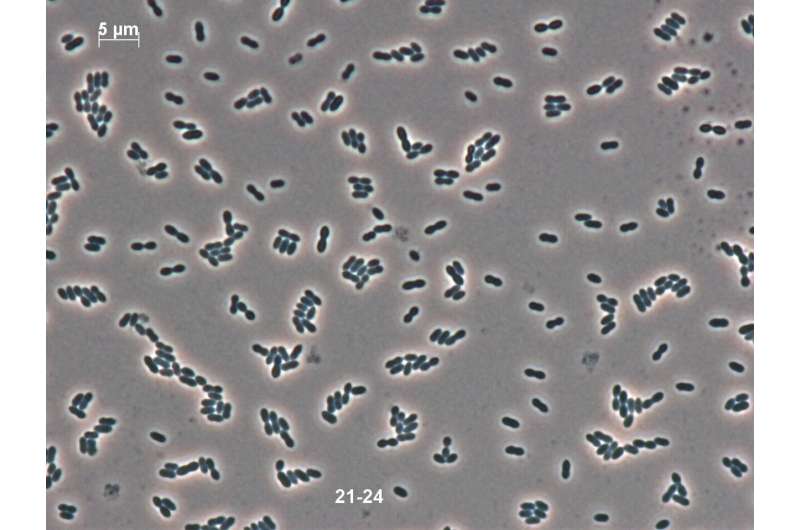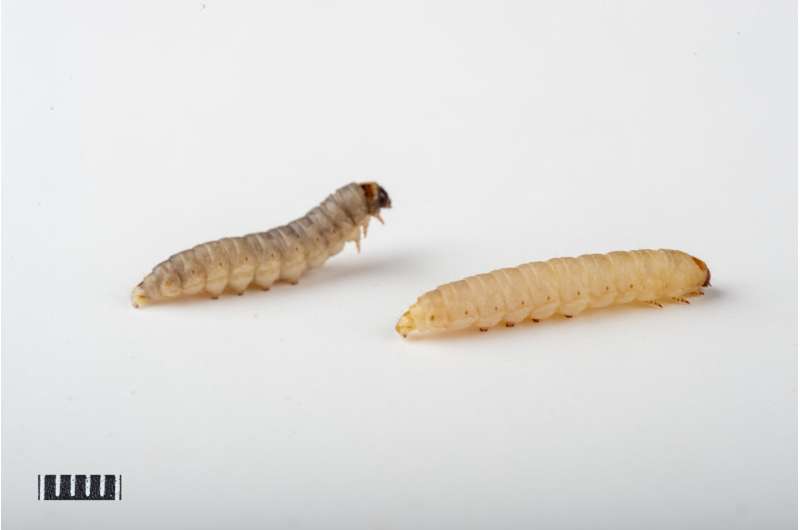New species of bacteria named after the academic institute where it was identified

A newly discovered species of antibiotic-resistant bacteria has been named after the academic institute where it was identified—the John Innes Centre.
Enterococcus innesii, was discovered by researchers investigating the gut microbiome of the Greater Wax Moth, Galleria mellonella. The moth is a pest of beehives and because it has a similar immune system to mammals is used as a scientific model to simulate the human gut.
Postgraduate researcher Harriet Gooch who discovered the new bacteria said: "It was a bit of a surprise because I wasn't expecting to find a new species. Once I realized this was a new species of Enterococcus it made sense to name it after the research institute where I work."
Researchers were working to isolate bacterial strains from colonies found in the digestive tracts of moth larvae. Harriet explains, "We were looking at what species were in the gut and what role they might be playing; it was known that the gut of Galleria mellonella larvae was generally dominated by enterococci but not always the same species. I wanted to see what bacteria were in the gut of the larvae I was using and what relevant genes they might have."
Comparative whole-genome sequencing, coupled with observation of traits such as growth and metabolism, revealed the strain was an entirely new species within the Enterococcus genus.

Enterococcus innesii joins 59 species of enterococci already known to science, 14 of them discovered in the past five years.
Enterococci commonly cause hospital-acquired infections including two species, E. gallinarum and E. casseliflavus, which are closely related to E. innesii.
This discovery could have a significant research impact because experiments reveal that Enterococcus innesii has a gene that confers resistance to the antibiotic vancomycin, which may be unique to this species. Understanding how this gene is regulated may help future research into how the bacterium evolves resistance to antibiotics.
"We have found that E. innesii carries a gene that makes the bacterium resistant to the antibiotic vancomycin. This same gene has also been found in other species of Enterococcus that have been associated with human infections", said Dr. Raymond Kiu from the Quadram Institute. "This highlights the importance of 'hunting' for antibiotic resistance genes in a broader range of enterococci including those from environmental and animal sources."
Vancomycin resistance is a growing issue when it comes to hospital-acquired Enterococcus infections. The research team say the new species may be a cause of hospital- acquired infections as it has genetic similarity to infective bacteria previously studied in the human gut.
Further work will focus on exploring how Galleria larvae and this new species along with other enterococci behave as commensals—biological relationships in which one party benefits but with no harm to the other.
The research was published in the International Journal of Systematic and Evolutionary Microbiology.
More information: Harriet C. C. Gooch et al, Enterococcus innesii sp. nov., isolated from the wax moth Galleria mellonella, International Journal of Systematic and Evolutionary Microbiology (2021). DOI: 10.1099/ijsem.0.005168
Provided by John Innes Centre





















